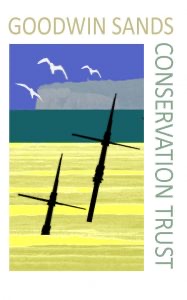Over hundreds of years, the 10 mile stretch of sand called the Goodwins has been the demise of thousands of ships and their crews. This natural hazard has trapped and consumed the unwary captain and his vessel by misfortune or mistake. Fog, storm and miscalculation are various acknowledged reasons of ships being wrecked on the Goodwin Sands … as well as some in mysterious circumstances.

The shifting sand would consume many ships and the riches of their cargo would lay undisturbed for centuries. However, it would be the weather and tide scouring the ever shifting sandbank which could expose these shipwrecks over a period of time. When this happens, fishermen inadvertently snag their nets on these uncharted obstructions and note the position on their GPS plotter. The Longitude and Latitude of the mysterious seabed hindrance are sometimes given to sport divers to investigate – and this is how new shipwrecks are found and named.

This is what happened in 1982, and divers were amazed to locate a shipwreck of the English East India Company full of coins and copper ingots. The Admiral Gardner was an outward bound sailing ship with a full cargo of goods that went aground on the west bank of the Goodwins in January, 1809. At the time of finding, the wreck was outside the jurisdiction of the Government and an intensive salvage operation took place. From the remains of her holds, most of the 46 tons of newly minted coins were reclaimed in small wooden barrels that held 26,000 in each.
Eventually, in 1989, the British Government gained the control of 12 miles from the coast and made the wreck site protected. By this time only some cannon and ferrous goods remained and the archaeologists had little to discover. As the years went on, sand started to build up over the wreck and it was last reported that at least 25 feet of sand has covered the remains of the Admiral Gardener.

A more recent find is that of the Dutch East Indiaman Rooswijk which became exposed near Kellett Gut on the Goodwin Sands. Although a government protection order was put on the wreck, it was acknowledged that it still belonged to the Dutch Government; even though it was lost in 1740. Her cargo comprised of 100 bars of silver and 36,000 pieces of eight. Most of these coins contained a regular 26.5 grams of .903 fine silver.

Throughout the summer of 2005, the 209 ton dive vessel, Terschelling, recovered the boxes of silver bars and the coins. On board was a diving archaeologist who recorded the finds and remains from the ship. Most of the relics were presented to Holland at a ceremony aboard the Dutch Navy frigate De Ruyter, at Plymouth, later that year.
The secrets that the Goodwin Sands hide, at the moment, lie undisturbed; however, perhaps over the coming years, with the storms that batter our coast, more shipwrecks will be found and the wealth of Britain’s maritime heritage increased.
